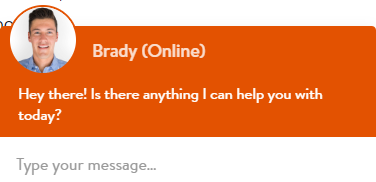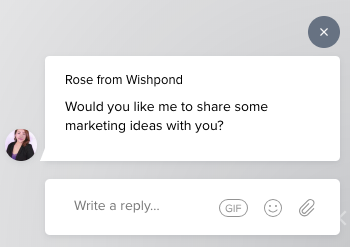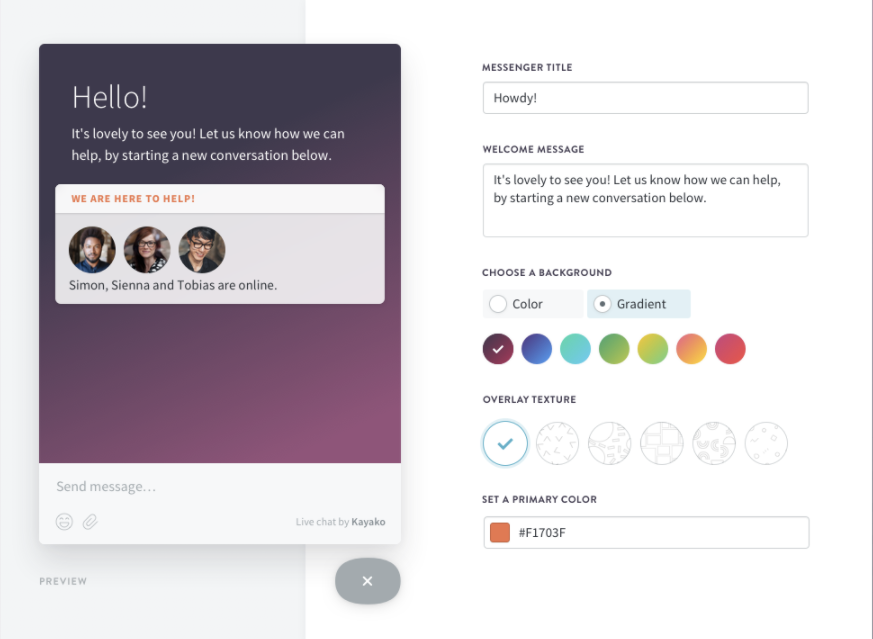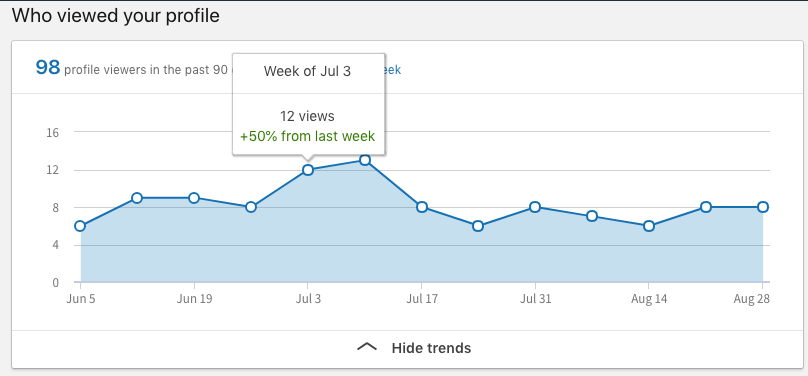Email is undoubtedly one of the best ways to acquire customers. Social media might be good for driving lots of traffic, initiating conversations and even capturing leads, but email is where you can have a private conversation.
After people sign up to your list, you can nurture them with personalized content over days, weeks and months, respond to their email responses and build a relationship.
Once you’ve built enough trust with a given subscriber, and he or she is showing signs of being ready to close a deal, you can pitch them your products and convert leads into sales.
So, if your aim is to increase revenue, you should implement tactics to generate maximum leads from traffic.
Unfortunately, the average conversion rate of a website is 1.95%, even when we’re talking lead generation.
Even the top 10% of websites only convert at 4.77%. This means that for every 100 visits, you will probably capture between 2 to 5 leads.
Do you feel good about letting the other 95 go? Didn’t think so.
And that’s why you need a strategy that will help you nurture the visitors who don’t opt in to your offers.
This post will show you exactly how to do that.
1. Start conversations with your website visitors
Two important factors responsible for the low conversion rate of websites are the absence of relevance and trust. No one is going to give you access to their inbox unless they’re convinced that you won’t abuse the privilege, and that you’ll email them content that they actually want.
When people visit a website, they are often presented with offers they aren’t interested in. Let’s take a look at my blog, for example.
On the sidebar, I promote a few different offers (like my social media images bundle) to everyone who visits my site. There is no customization here. People who visit any page on my blog will see promotions for the same offers.
But I have set custom popups to appear depending on the topic of the post. On most posts, I have a popup that promotes an ebook that helps people create a social media strategy.

But for my posts on Pinterest marketing, a different popup, that promotes a Pinterest template for creating the perfect post, appears. You can see it in action on this post on Pinterest image sizes.

Even though this popup is targeted towards people who are interested in marketing with Pinterest, only a few people will be interested in signing up for that template. This is because they might already know how to create a good organic post. And they might be more interested in a topic like Pinterest ads or how to get more followers.
But there is no way for me to know this as soon as they visit my website, so there’s no way for me to present them with the right offer.
The best way to learn more about visitors’ interests is simply to ask them.
This can be done with the help of live chat widgets. You can install one on the right bottom corner of your website. When people visit your website, it will slide up. And you can add a question that will encourage visitors to engage with you in a discussion on the topic of the post or landing page they are on.
You can answer their questions, build trust and gather more information. Then you can direct them to a lead magnet they will be more interested in signing up for. Or, if you’re using on-site chat tool that is powered by Facebook Messenger, you can even skip the email capture goal altogether, since you’ll be able to send them nurture-focused follow-up messages on that platform, which may even get a better response rate than email.
Sometimes, through your chat, you will learn that they are ready buyers, so you won’t need to even send them through your sales funnel. You can immediately direct them to a landing page where they can make a purchase.
That conversation you have with them is the nurturing process. As the person is right there having the chat with you and very active, the nurture to sale process can be achieved in minutes instead of days, weeks or months.
You can see an example of a well set up live chat on the Directive Consulting blog. It appears on all their blog posts.

Wishpond has one on the side of its blog articles:

It looks very inviting as it asks you if there’s anything they can help you with. There’s also the name of the person you will be chatting with and a photo of them.
If a website visitor has a question, and the call-to-action in the content they’re viewing doesn’t resonate, they can use live chat instead.
A real person from your company won’t need to get involved in most chats, as chatbots can get the job done. A well-programmed chatbot can answer questions and direct the person to the right places, and when the time comes, it can reassign the conversation to a real person.

To set up your live chat, you can use a tool like Kayako or LiveChat. After you install it on your website, the live chat will be displayed, and visitors can begin having conversations with your customer service team. If all members of your team are offline, the prospect can leave their email address so that you can contact them later.
2. Use advanced analytics to track website visitors
If you are looking for a more subtle, data-driven method to nurture leads who don’t opt in to your offers, you can try website tracking instead. This is where you integrate a website visitor tracking tool with your analytics tools and/or CRM.
It will track people visiting your website and provide you with their contact details. It will also give you some information about their activity.
You can use this data to connect with them using carefully crafted, personalized outreach messages on other channels.
One effective anonymous visitor tracking tool I have tried is Leadfeeder, and another is WhoIsVisiting. Once you integrate one of these tools with your Google Analytics account, they repackage your Analytics data to be specific to each IP address, showing you the pages each site visitor checked out, where they are located, where they work and more.

It also shows you which of your Linkedin connections work in that company so that you can message them.

It can be used just like you use the Linkedin “who has viewed your profile” feature, except that in this case, you’re following up with people who have checked out your website. You can also tweet or email people directly, simply asking them if they need help with anything.
3. Retarget qualified visitors who don’t opt in
Another popular method for nurturing leads who do not opt in to your offers is through ad retargeting using social networks. Most social networks that provide the option to advertise also give you a custom pixel to install on your website.
This pixel tracks people every time they visit your website. You can then structure your ad targeting settings to only target these people. You can choose between reaching people who visited any page on your website, or people who visited a specific page – or combination of pages.
This is called retargeting, and it’s a great way to display highly relevant ads to people who already have some familiarity with your brand.
For example, let’s say you have a shoe blog and someone recently read a post on the Chelsea Boot. You know that this person is interested in this topic, because you installed a pixel on that post.
So, you can serve them ads that promote lead magnets on boots that they didn’t see while they were on your blog. You can also direct them to more blog posts on boots – or even a product page for direct sales.
As an audience member, I experience retargeting ads on a regular basis. I was on the Masterclass website recently looking at some courses, and ever since, they have been promoting those courses to me using retargeted ads on Facebook, Instagram and YouTube, with trailers for the courses.

I am certain they are retargeting ads, as they are promoting the same specific courses that I checked out.
This is a great way to reach people who don’t op tin. Using retargeting, you can also upload email lists and change the settings to not show the ad to people who already made purchases. This will increase conversion rates and reduce your ad spend.
Don’t let the good ones escape so easily
These are my favorite three techniques for nurturing leads who don’t opt in to your offers. In my experience, you can get the best performance by experimenting with combinations of the three. Including live chat on your site lets you learn more about your audience before you present them with the right offer or product. The other two involve tracking website visitors to learn even more about them before you contact them via organic and paid social media.
They are all relatively inexpensive and easy to implement, so you might as well give them a try today.
How do you nurture leads who don’t opt in? Have you tried any of the above tactics? Please leave your comments below.

About the Author:
Mitt Ray is the founder of Social Marketing Writing, where you can download 100 Free Social Media Background Images.

